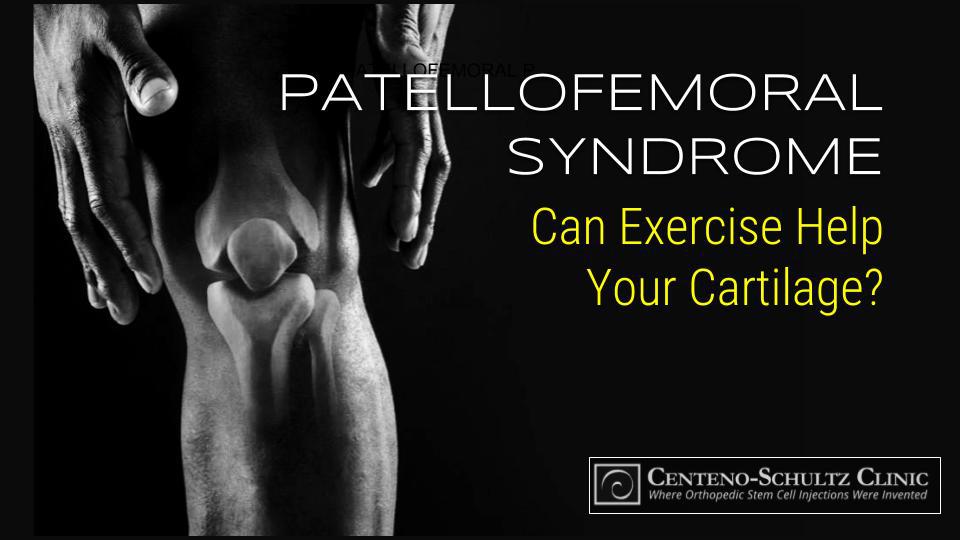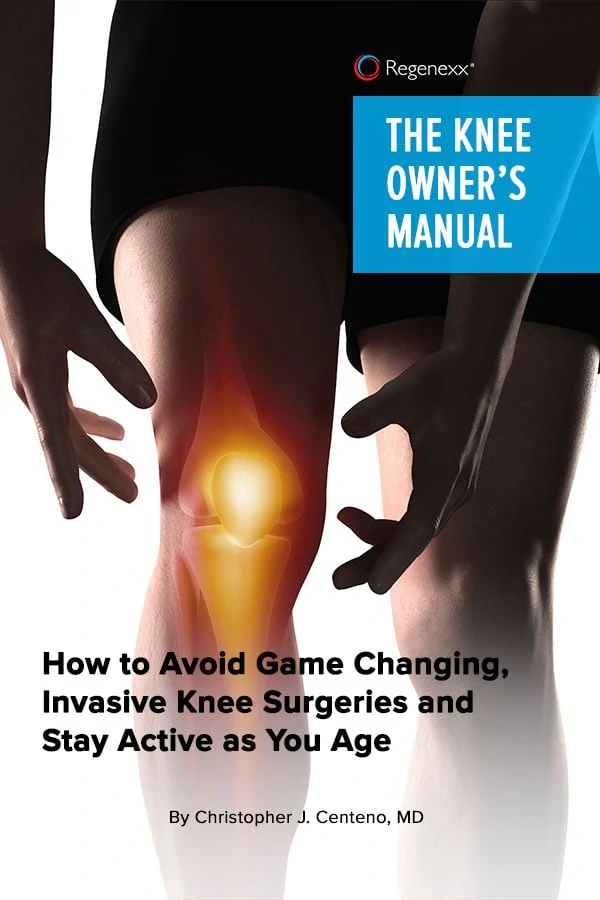Exercise is good for so many things, but one of the questions we often get from our patients with musculoskeletal conditions is, Can I still exercise? In most cases, the answer is yes, and, in fact, in many cases, exercise may actually improve or relieve your condition. Patellofemoral syndrome or arthritis in the patellofemoral compartment is one of those conditions that has been found to be helped by exercise, so today we’re focusing on exercise and patellofemoral syndrome in this second post of our April exercise series.
What Is Patellofemoral Syndrome?
The patella is the medical term for the kneecap, and the femur is the long upper-leg bone. The patellofemoral compartment is made up of the patella, the distal end of the femur, and cartilage, and the structure is commonly referred to as the kneecap joint. This joint can become arthritic when it experiences cartilage degeneration. What might cause this? As we move the knee, the kneecap tracks along a groove in the femur. An injury that might throw the kneecap out of alignment (or out of that groove) can cause patellofemoral dysfunction and pain. If this isn’t addressed, it can create excessive wear on the cartilage, leading to arthritis. Cartilage can also degenerate as a result of normal wear and tear as we age.
Can Exercise Help Bad Cartilage in Patellofemoral Syndrome?
You can find any number of studies on exercise and arthritis…some studies show exercise, such as running, for example, causes more arthritis, while others find that exercise, such as running, decreases arthritis. These studies, however, tend to look for associations, meaning, for example, that runners may have more or less arthritis at one specific point in time. One study, however, stands out to us because it’s a randomized controlled trial and is prospective. In other words, it analyzed what happens to cartilage with or without exercise. Let’s review the study.
Exercise Found to Help Cartilage in Women with Patellofemoral Syndrome
The study consisted of postmenopausal women with mild arthritis in the patellofemoral compartment. It’s important that women were selected for this study as postmenopausal women are at a higher risk for the disease. The 80 women were randomly placed into one of two groups: an exercise group and a non-exercise group. The exercise group performed progressive resistance exercises over a one-year period. The results? Though pain and function weren’t changed, the exercise group experienced 7–8% better knee cartilage quality compared to the non-exercise group. Knee strength also improved in the exercise group.
While this high-quality study found improvements in knee cartilage and strength after one year of exercise, it’s important to note, the specific focus was on mild arthritis in patellofemoral syndrome. Moderate or severe arthritis would likely have different results. If you have patellofemoral pain that you know is due to mild arthritis, however, hitting the gym, according to this study, may improve your cartilage and strength.
It’s worth noting that patellofemoral pain can be due to other issues, such as injuries to the muscles or tendons that support the knee and kneecap. Addressing these quickly is the key to protecting your kneecap cartilage before it progresses to arthritis. Sometimes this is actually as simple as massaging out the muscle at the trigger points, while other times it might be addressing irritated nerves in the low back. The key is to find out what is causing your patellofemoral issue and address it before it gets worse.

